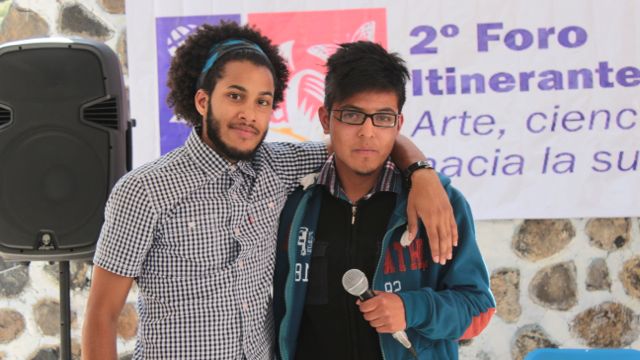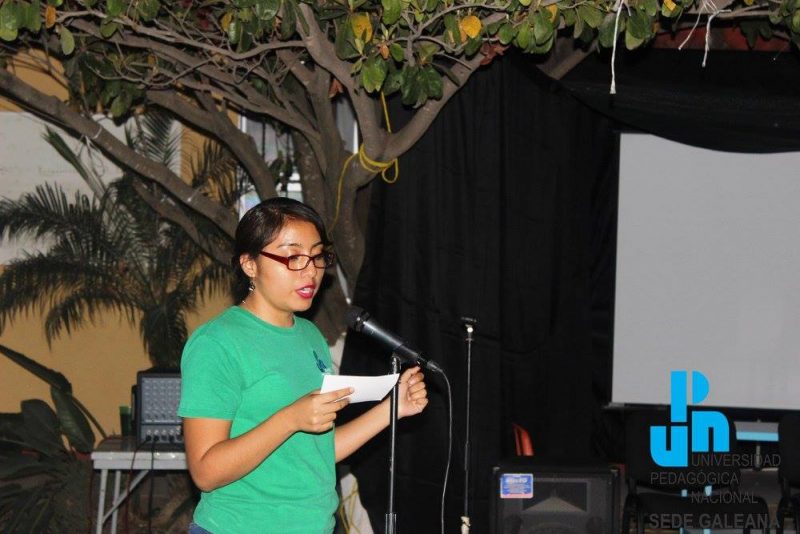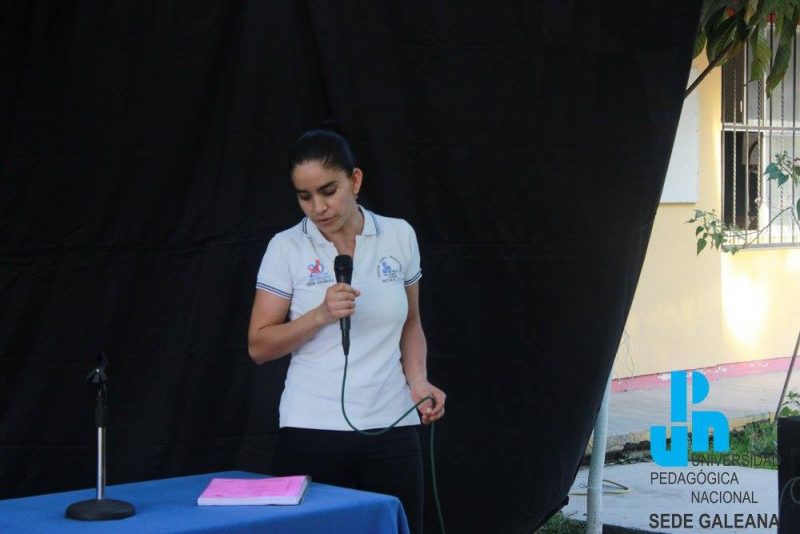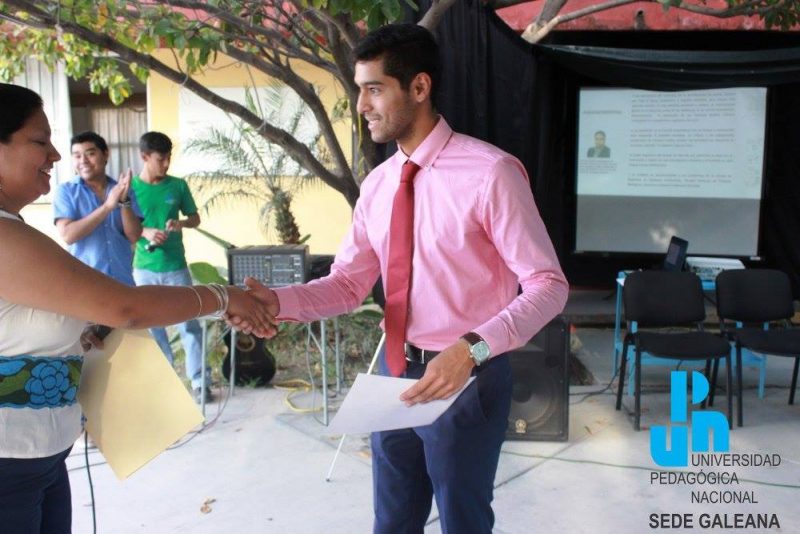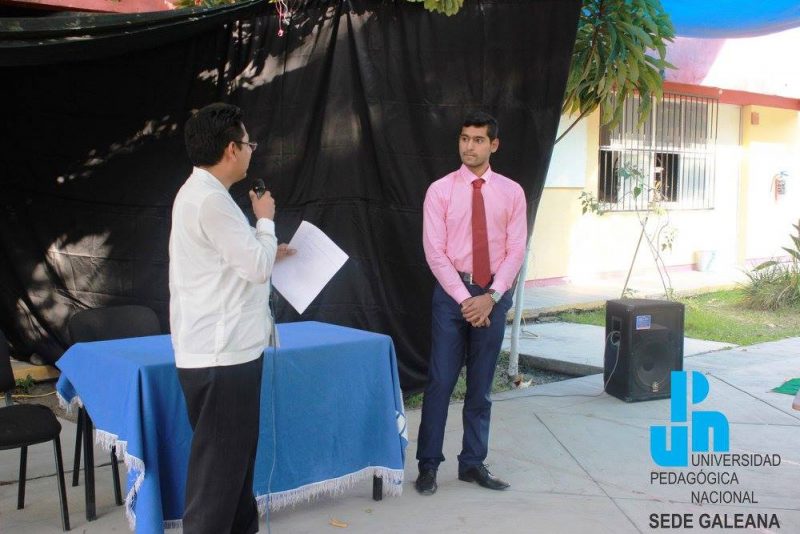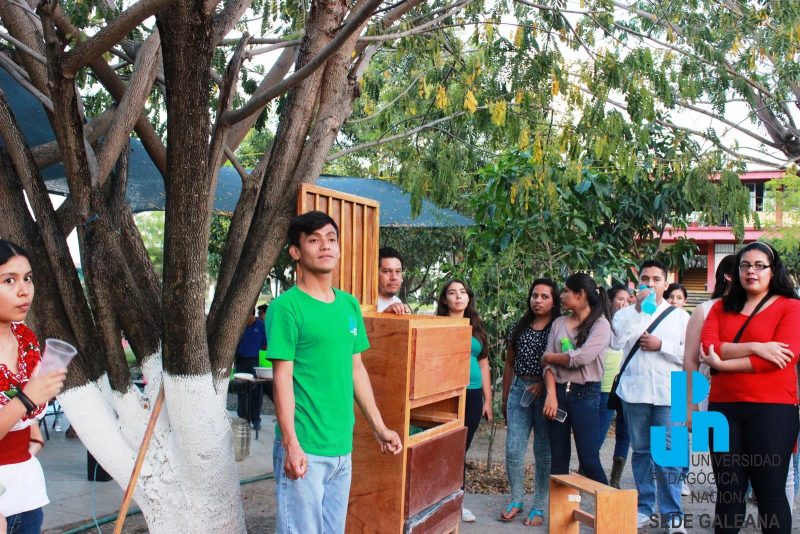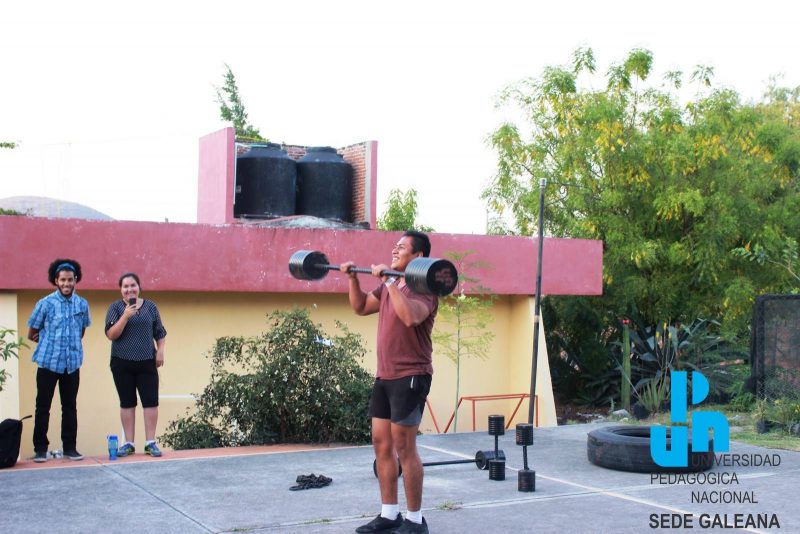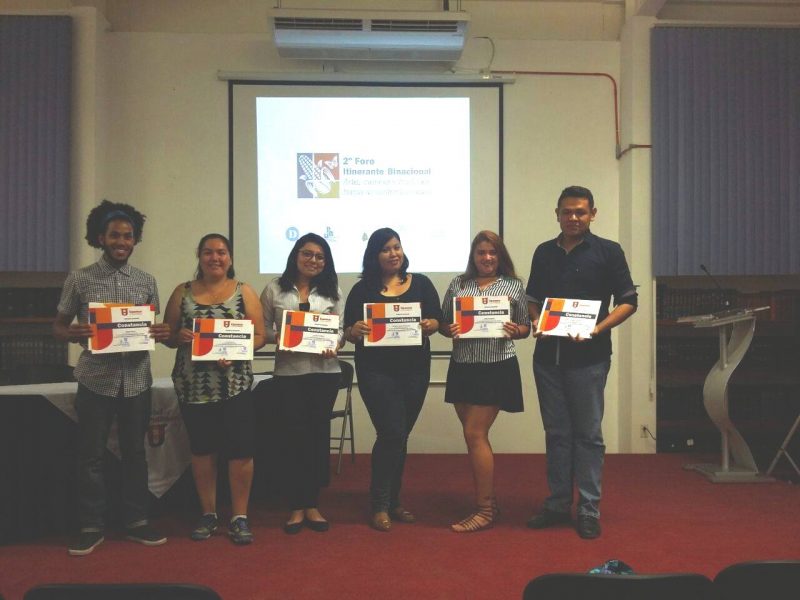(English translation below)
Tejemos redes. También las procuramos y ayudamos a que otros las hagan con sus herramientas, con sus talentos, con sus propias realidades. Así como las arañas o los artistas en sus telares. Nuestro propósito no es quedar bien con la comunidad científica, política o artística; más bien, es hacer lo que nos gusta y enlazarnos para que otros hagan lo mismo: tomar a la escuela, a los pueblos y a la naturaleza como mentores.
Afortunadamente, en todos lados hay personas generosas dispuestas a tejer con o sin nosotros, especialmente jóvenes, lo comprobamos en el 2º Foro Itinerante Binacional Arte, Ciencia y Tradición hacia la Sustentabilidad. En ese espacio observamos cómo, con los recursos que tenían a su alcance, jóvenes de preparatoria y licenciatura cuestionaban el orden establecido para cuidar el tejido social y ambiental generado desde épocas ancestrales.
Dicho tejido puede compararse con un hermoso rebozo que sirve para cobijar lo más preciado, por ello, a dichos jóvenes no les importa mucho quienes son los que lideran o cual sea el beneficio que obtengan; lo hacen porque les gusta, porque creen, porque saben que otras realidades son posibles y lo vuelven propio, lo vuelven sentimiento y protesta, magia y pasión. El rap dedicado a la naturaleza de Miguel Ángel González Pérez, de la preparatoria comunitaria de Tres Marías, una institución enclavada en el bosque, es sólo un ejemplo:
¿Y lo que en verdad es importante qué?
¿Les importa una mierda o nadie lo ve?
Es por lo mismo que en el pasado nos quitaron a 43.
Pero bueno: yo vengo a hablar de naturaleza
Y los 43 (refiriéndose a los estudiantes normalistas de Ayotzinapa, Guerrero, todos ellos jóvenes, que el 26 de septiembre de 2014 fueron desaparecidos por una red generada por el narcotráfico en México) fueron motivo de un mural que hace también referencia a la naturaleza y el arte en la Universidad Pedagógica Nacional (UPN), sede Cuernavaca, en Morelos.
Los jóvenes (1 de cada 4 personas en México tienen entre 15 y 29 años) están posicionados estratégicamente en una sociedad del conocimiento que crece a pasos agigantados. En una década este sector de la población ha tenido la posibilidad de aprender y enfrentarse, a través de la tecnología, a una sociedad que los estigmatiza como improductivos, inútiles o peligrosos, cuando son ellos los que se atreven a imaginar lo inimaginable, a equivocarse y a enfrentar diversos obstáculos.
Así, Nelson Castillo Alemán, estudiante de la Escuela Nacional de Ciencias Biológicas, del Instituto Politécnico Nacional, pudo dar a conocer la manera como “fue hacia la gente” para trabajar el proyecto “Vías de recolección, transporte y parque vehicular de residuos sólidos urbanos de Jojutla” y compartir con estudiantes de la Licenciatura en Intervención Educativa de la UPN, sede Galeana, también en Morelos, formas de intervenir en problemas ambientales. Todos ellos son jóvenes de licenciatura, como lo son Lizbeth Díaz, Rubicelia Sánchez y Manuel González, estudiantes de la Universidad Politécnica del Estado de Morelos, quienes, desde la política pública en México, ofrecieron un panorama sobre las Energías alternas y las finanzas en México.
Jóvenes como Lily Deer o Joni Saganash del Dawson College que compartieron lo que se hace en sus naciones indígenas, así como también estudiantes de la licenciatura en Educación Indígena de la UPN- Cuernavaca, y las jóvenes mujeres Chontales de Tabasco, representadas por Ana Rosa Rodríguez Luna y Eduardo López Hernández, investigadores de la Universidad Juárez Autónoma de Tabasco.
Todos ellos, los que estuvieron presentes en el foro y los que no, hicieron que nos comprometiéramos como tejedores, artistas o artesanos que enlazan sueños, proyectos y estilos de vida.
Por: Dr. Juan Salvador Nambo (UPEMOR-UPN)
______________________
Weaving networks
We weave networks. Also we try and help others to do it with their tools, their talents, their own realities. Just as spiders or artists in their looms. Our purpose is not to look good in front of the scientific, political or artistic community; rather, it is to do what we like and link up to others to do the same: to take our schools, our (indigenous) peoples and nature as mentors.
Fortunately, everywhere there are generous people willing to knit with or without us, especially young people, we witnessed this in the 2nd Bi-national Itinerant Forum: Art, Science and Tradition for Sustainability. In that space we observed how, with the resources they had at their disposal, young high school and undergraduate students questioned the established order so they could care for the social and environmental fabric weaved since ancient times.
Such tissue can be compared to a beautiful shawl that serves to shelter that which is most precious, thus, these young people do not care much about who is leading or whatever benefit they could receive; they do it because they like it, because they believe, because they know that other realities are possible and make this reality their own, they render it feeling and protest, magic and passion. The rap dedicated to nature by Miguel Angel Gonzalez Perez, from the community college of Tres Marias, an institution nestled in the woods, is just one example:
“And what about what is important, what about that?
Does anyone give a shit or does no one see it?
And that is why they took 43 from us
But hey, I come to speak of nature”
And the 43 (in reference to the Ayotzinapa, student teachers from Guerrero, all of them youth that in September 26, 2014 were disappeared by a network linked to drug trafficking in Mexico) were the subject of a mural which also refers to nature and art at the National Pedagogic University (UPN), Cuernavaca, Morelos.
Young people (1 in 4 people in Mexico are between 15 and 29 years) are positioned strategically in a knowledge society that is growing by leaps and bounds. Within a decade this sector of the population has had the opportunity to learn and confront, through technology, a society that stigmatizes them as unproductive, useless or dangerous, when it is they who dare to think the unthinkable, to err and face various obstacles.
Thus, Nelson Castillo German, student at the National School of Biological Sciences, National Polytechnic Institute, let us know how he “went to the people” to work on the project “Routes for the collection and transportation of municipal solid waste in Jojutla” and he shared with college students, the majoring studying Educational Intervention at the UPN Galeana, also in Morelos, ways of carrying out environmental intervention. They are all young undergraduate students, just like Lizbeth Diaz, Rubicelia Sanchez and Manuel González, students of the Polytechnic University of the State of Morelos, who, offered an overview of the alternative view on Energy use in Mexico and its financing.
Young people like Joni Saganash and Lili Deer from Dawson College who shared practices from their indigenous nations, as well as students of from the Indigenous Education program from the UPN- Cuernavaca, and the experience of Chontal women from Tabasco, represented by Ana Rosa Rodriguez Luna and Eduardo Lopez Hernandez, researchers from the Juárez Autónomous University of Tabasco.
All those who were present at the forum and those who were not, made us commit ourselves as weavers, artists and artisans that weave dreams, projects and lifestyles.
By Dr. Juan Salvador Nambo (UPEMOR-UPN)
Translated by Gisela Frias


